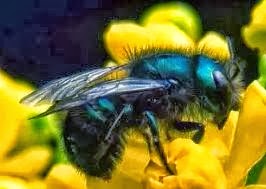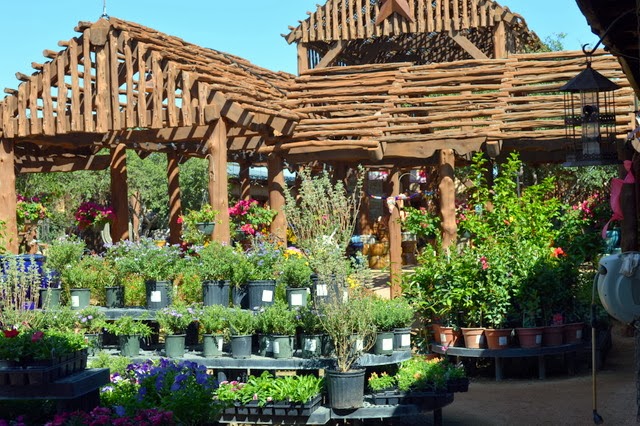 Is your yard covered in leaves as ours is? We have been composting for several years but only recently with good results. A year or so ago, we rebuilt our raised garden and added two new sections for compost materials. (see the post of Sept 20, 2013 HERE)
Is your yard covered in leaves as ours is? We have been composting for several years but only recently with good results. A year or so ago, we rebuilt our raised garden and added two new sections for compost materials. (see the post of Sept 20, 2013 HERE)  We have learned that turning the compost several times yields faster and better results. And it really helps to attack it with our small garden gas tiller a few times a season. It helps chop and stir things up. We do not put weeds in the compost and avoid any hard stems which make the process take longer. Nor do we use manure or table scraps, other than vegetables and orange peels. We do add a cup or two of garden fertilizer and a few shovels of regular dirt from time to time. The dirt adds beneficial bacteria, etc.
We have learned that turning the compost several times yields faster and better results. And it really helps to attack it with our small garden gas tiller a few times a season. It helps chop and stir things up. We do not put weeds in the compost and avoid any hard stems which make the process take longer. Nor do we use manure or table scraps, other than vegetables and orange peels. We do add a cup or two of garden fertilizer and a few shovels of regular dirt from time to time. The dirt adds beneficial bacteria, etc.
Here are some short tips that might be helpful from Ron Krupp Author of The Woodchuck's Guide to Gardening
If the pile is too dry, water it.
If the pile gets too hot from too much nitrogen, cool it down by opening it up and adding some with carbon materials like hay and leaves. (we have never bothered with a thermometer) You will smell ammonia (nitrogen gas) in the case where too much fresh animal manure is present. Have you ever been over-come by the odor of chicken manure? What you smell is the ammonia (nitrogen gas).
If the pile is too soggy, there is not enough oxygen; aerate the pile and add some dry materials.
Add lime or wood ashes if the heap begins to smell like garbage. Don't throw in meat scraps unless you want skunks in your backyard-and the sound of screaming neighbors.
The key to successful composting is to have enough air and water, the right ingredients and the correct carbon (straw, hay) to nitrogen (fresh grass clippings, animal manures) ratio. Fresh manure mixed with hay bedding from a barn is the ideal combination. (good luck with that) This translates into about 12 parts carbon and one part nitrogen or a 12 to 1 ration. Most home gardeners use what materials are available.
Leaves
Leaves are the most abundant and easily accessible material for the compost pile. One of gardening's enduring misconceptions is that leaves such as maple and oak are acidic. Leaves that have gone through the composting process and come out as leaf mold test close to a neutral (pH) of seven. In fact, no matter what kind of tree foliage, including pine needles, the final product will have a pH of between six and seven. That's almost perfect for most plants. (pH refers to the sweetness or acidity of a soil.
 Blueberries love acid soils-around a pH of five vs. most
vegetable plants which need a pH closer to six and seven. Lime and or wood
ashes increase the pH in your soil. Leaves are a triple treat for the garden as
an addition to the compost pile, as mulch, or as a special organic amendment
called leaf mold.
Blueberries love acid soils-around a pH of five vs. most
vegetable plants which need a pH closer to six and seven. Lime and or wood
ashes increase the pH in your soil. Leaves are a triple treat for the garden as
an addition to the compost pile, as mulch, or as a special organic amendment
called leaf mold.
They're a nitrogen source when the leaves are green and a
carbon source when the leaves are brown and dry. The problem is that some
leaves mat down when wet, which means if they are placed in the compost pile,
they'll pack down and exclude air from the mix and shed water off the pile.
Flat leaves such as sugar maples tend to mat together and curly ones such as
oaks and silver maples are an airier choice, but they all mat down to some
extent when wet.The best way of dealing with leaves is to shred
them with a lawn mower or leaf blower. (or tiller) Or pile them up and let them sit for a
few years, turning the pile now and then.
 This follows the woodchuck principle
of "Leaf It Alone." Eventually, the leaves will break down into leaf
mold, which means they have decayed into rich crumbs. It's not that they're
filled with lots of fungus and mold even though there is always a mixture of
bacteria and a little mold with the breakdown of most organic materials. Leaf
mold occurs naturally in forests over years of the leaf life cycle. Have you
ever noticed that rich dark brown stuff on the forest floor? Now you know what
it's called. Some leaves contain weed-suppressing chemicals. Leaf mulch
suppresses weeds, conserves moisture, attracts earthworms, protects plants from
winter's freezing and eroding winds, and improves soil structure.
This follows the woodchuck principle
of "Leaf It Alone." Eventually, the leaves will break down into leaf
mold, which means they have decayed into rich crumbs. It's not that they're
filled with lots of fungus and mold even though there is always a mixture of
bacteria and a little mold with the breakdown of most organic materials. Leaf
mold occurs naturally in forests over years of the leaf life cycle. Have you
ever noticed that rich dark brown stuff on the forest floor? Now you know what
it's called. Some leaves contain weed-suppressing chemicals. Leaf mulch
suppresses weeds, conserves moisture, attracts earthworms, protects plants from
winter's freezing and eroding winds, and improves soil structure.
(The sign tells the lawn guys where to put the clippings thanks to Google Spanish Translator)













































